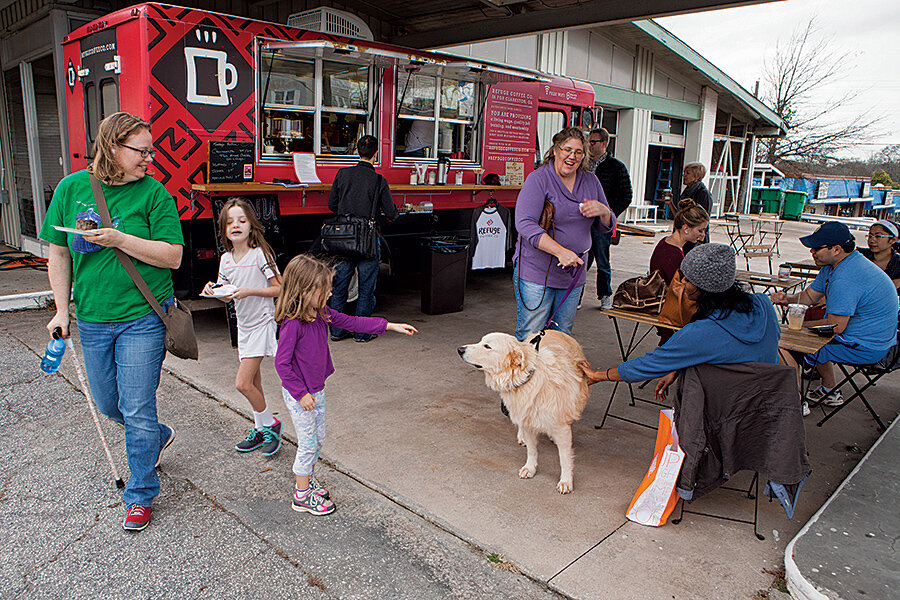Diversity as the destination
Loading...
It was common for parents, friends, and co-workers to shake their heads. You’re thinking about living where? Urban neighborhoods seemed sketchy in the 1970s. A wave of suburbanization in the second half of the 20th century had left American cities increasingly forlorn. That trend accelerated amid racial unrest and rising crime rates in the 1960s.
By the next decade, however, “urban pioneers” – usually young, often childless, always ready to invest their sweat equity – saw opportunity in downtown warehouses, lofts, and neglected houses of earlier eras. Pioneering required adventurousness and a high tolerance for plaster dust. Like a lot of boomers, my wife and I were drawn to undervalued fixer-uppers: a Victorian bungalow in Dallas’s Oak Cliff, an American Foursquare in St. Louis’s Tower Grove, a mansard Second Empire in Boston’s Jamaica Plain.
Pioneering wasn’t for everybody. First came DIYers, artists, and various nonconformists. Then came coffee shops, galleries, boutiques. Eventually, word spread that a neighborhood was cool. Areas that were once scrappy and interesting became hot and pricey. Cities mostly applauded that change, harvesting tax revenue as property values rose.
But in many urban neighborhoods, middle- and lower-income residents were being priced out. Jessica Mendoza’s cover story (click here) examines what happens when diverse communities evolve into gentrified monocultures. Healthy cities need residents and workers of all races, ethnicities, skills, and incomes. Plumbers, teachers, police officers, and janitors are as vital to a community as are creative-class innovators and hip restaurateurs. City officials are now trying to protect urban diversity by backing affordable housing and providing home-loan assistance. These are necessary efforts to rebalance urban communities. But the problem behind social imbalance goes beyond urban demographics.
In recent decades, Americans have been separating themselves into like-minded, economically homogeneous, culturally similar communities. Journalist Bill Bishop and statistician Robert Cushing termed this phenomenon “The Big Sort” in a 2008 book with that title. The divide isn’t just about the persistent political split between red and blue America. People of similar beliefs and income levels end up in the same communities, rarely exposing themselves to people who have different values, viewpoints, and lifestyles. (A recent Pew study noted that “liberals ... prefer to live in cities while conservatives are partial to small towns and rural areas.”) People of similar educational, economic, and ideological backgrounds also tend to marry one another and produce offspring with the same beliefs, educational opportunities, and economic prospects. All of this sorting has deepened the political polarization and economic inequality of the United States.
Now, sorting is not exclusive to the 21st century. It is as old as tribes. Tribes can be beneficial when they protect minorities and incubate cultures. But too much tribalism results in exclusivity and insularity and can touch off intertribal conflict. Neighborhoods and nations can’t afford that. Diversity should not just be a transitory phase on the road to monoculture. It should be the destination, especially if your national motto is “Out of many, one.”






